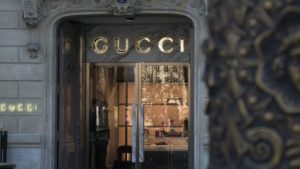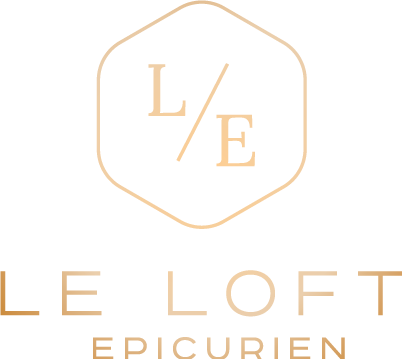Luxury essentials: Instagram marketing
What do Chanel, Louis Vuitton, and Gucci have in common? Aside from the fact that they are luxurious fashion brands who are dominating Instagram with their high following number, they mostly use Instagram as a digital gallery. Nothing more, nothing less. In 2020, we say it’s time to shake things up. Here’s how.
Contrary to our instinct, the luxury market grows year after year. Even in 2010, right after the economical crisis, the market proved its resilience and got back on its feet with an increase in worth even higher than in 2007 when the crisis hit us. Maybe this resilience made the market somewhat lazy. Maybe it led some to believe that they were safe and could rest.
The contrary is true. Where other brands tried out different things to engage with their followers, brands such as Louis Vuitton, for the most part, stayed on the classic content path. Meaning posting photos and/or videos regularly without trying to create engagement let alone any real value. The message that they mostly convey to their audiences, simply said, is “buy me”.
Thinking that by posting photos and videos with a short description and a referral to the link in our Instagram bio’s we will be successful is wishful thinking. Instead, customers are looking for engagement and content that brings value to their lives. Hence the reason ad blockers are on the rise. Because the content they block isn’t doing anything for them.
So, what do we have to do?
Create meaningful content
The key to creating meaningful content is by being consumer-centric. This means that your content is tailored around the interests of your audience. You don’t try to sell your products, you are trying to make them curious and give them something interesting to watch/read. 80% of your content should be around what your consumers care about and only 20% around selling. One way to do this is by following the example of Gucci who in 2017 when they started to post memes.

In total, the famous designer brand posted 30 memes. Some people were shocked, others skeptical about this type of content being placed by a luxury brand. The numbers are hard to argue with, however. The ‘collection’ was able to reach over 120 million people and almost hit 22.000 comments. It even managed to become the two most engaging posts on Instagram, ever.
Your consumers will see you as a valuable brand, which helps you to bypass the ad blockers and thus makes them open to later on receive more sales orientated content. They won’t be as resistant because they have pleasant feelings attached to your brand. You’re not the brand that only posts generic content or sends pushy sales letters. You create content they want to watch and care about.
As Seth Godin once said:
“People don’t buy goods and services. They buy relations, story, and magic.”
Series
The best way to create meaningful content is to make one or more series around your brand. An example of this could be a series on your Instagram TV where the audiences follow the CEO or different key managers from your brand into their day to day lives. Who are they? What is their agenda like? What are some of the cool things they do? Are there things we didn’t know they do? This is especially interesting when there is a big event coming up where you can show e.g. behind the scenes footage. In those cases, the videos serve as content for your series but also promote the event.
We suggest making a summary of the activities for a week. This way your spreading the editing and don’t have to film every hour of every day. To help you put out your content regularly we advise creating/making a content calendar. Consistency is key since the end goal is to create a habit with your audiences. You want them to know when they can expect something new from you.
User-Generated Content
 Yes, you’re a famous and tasteful brand. However, that doesn’t mean you have to be cold and distant. Every brand, big or small, has one thing in common: the people that buy their products. This is the “magic” part Seth Godin was referring to. That’s why we encourage you to repost the photos and videos you’re tagged in on your stories or on your timeline.
Yes, you’re a famous and tasteful brand. However, that doesn’t mean you have to be cold and distant. Every brand, big or small, has one thing in common: the people that buy their products. This is the “magic” part Seth Godin was referring to. That’s why we encourage you to repost the photos and videos you’re tagged in on your stories or on your timeline.
By reposting their content, you show them you don’t take them for granted. It’s also a great idea to make your hashtag for your UGC because this boosts the engagement with 12.6% and makes it easy for people to see all the posts where the hashtag was used.
Valentino, known for its luxury clothing amongst other things, was able to double their following in 2019. How? By mixing UGC with their professional photographs and by responding to comments. They started doing this in 2016. Three years later, they profit greatly from it.
Increase interaction
Engage with followers
Maybe the simplest of all is to like and react to the comments of your audience. It could be that they said something positive about the new collection. Thank them and create a conversation. Ask them what their favorite items are and why. Or when they tag you in a post where they proudly show one of your products they bought, react to it. Compliment them, ask a question,…
Instagram, by far, has a wide range of possibilities to create engagement. Stories, for example, let you create polls that let you find out what your followers like/don’t like, how they feel about your collections, which content type they prefer over another…You can also ask a question that followers can briefly answer.
Live Streaming
 Instagram also enables you to live stream. Here are some things to keep in mind when you want to live stream:
Instagram also enables you to live stream. Here are some things to keep in mind when you want to live stream:
- Be prepared. Know what you want to say and practice beforehand.
- Announce it beforehand. This way, you ensure that your followers know when you are going live.
- Make sure to read the comments of your followers and if possible respond to them.
A great extra to live streaming is that you can save the live stream when you end it and later post as a video on Instagram TV. This way people who missed it can still watch it and you have a new piece of authentic content.
Differentiate
The key to keeping your audience engaged is to vary your content. Storys are a great beginning but don’t stop there. Why not make a habit of introducing an employee with a short text about who he/she is, what they like to do, how long they are work for the company,... Why not show a ritual the employees have such as going out together on a Friday evening? What restaurant/bar are they going to visit? Make some fun photos/stories and upload them with a hashtag.
Instagram TV
Another tip is to use Instagram TV. It enables you to post longer format videos and thus focus more on storytelling. For example, upload an interview with a celebrity who is a loyal fan of your products. Make sure both your audio and video (9:16 ratio) are of good quality, your thumbnail must be a JPEG and that you use the right hashtags for your brand in the description. The video will then automatically appear on the timeline of your audience. Later you can look at how well it did via the Instagram statistics.
Takeover
Something also worth trying out is to use influencers, employees and or brand ambassadors to do a takeover. In short, you announce that one of the above will take over control of either your Instagram completely, your stories or Instagram TV depending on your preference. He/she will then make content that is in line with the brand but also gives enough control to the creator to be able to make great content that suits his/her style.
If you found the info useful, leave a like, comment and/or share it with your network. We are always open to constructive feedback to help improve our content. This way we can offer our followers the most value.
Luxury essentials: video marketing
We as humans are visual creatures. We like to consume visually appealing things, whether they are photos or videos. In recent years our attention span has further decreased, placing us below a goldfish. Videos, therefore, become even more important to keep visitors engaged. These reasons are meant as a wake-up call to luxury brands. We advise you to start working on your video marketing if you aren’t already. To help you get started, we give you some relevant information about video and tips you can use to conquer your audiences.
Around 2018, it was hard to ignore the need to implement video in your digital strategy. 2 years later and you can say it is impossible.
- This year, 80% of the internet will consist of out of video
- Mobile video consumption increases with 100% year after year
- YouTube has become the 2nd most visited platform after Google
- Ads spend on online videos will increase to $ 61 billion
Some marketing pros have picked up on this evolution and are increasing their investments in videos since August 2019. Others haven’t. This is disadvantageous because video offers many advantages
- Great ROI
- Increase in views
- More people are afterward interested in you
- More shares hence more engagement
Something that also makes our hearts beat faster, is the fact that video can be used in every stage of your marketing funnel. Need proof? In the awareness stage, you can implement brand videos, product demos, and behind the scenes. The consideration stage is perfect for tutorials, social proof, vlogs, explainer videos and more. Moving up to purchasing and webinars, advice videos, FAQ’s, and demos are ideal content. Finally, to increase loyalty, use videos to thank customers and reassure them they made the right decision.
Where to start
As is the case with everything new, you might have cold feet. That’s understandable. One of the first questions to pop up is about which topics a brand should cover. To answer this question, we will use Gary Vaynerchuk as an example. When he was still in the wine business, Gary was a pioneer in terms of video. In 2006, he started making reviews and analyses about the wines he sold. Today Gary has a huge multi-million-dollar business with his communication agency and media hub.
The idea was and still is to create content around your brand and your products. The only side note here is to diversify your content in terms of subjects it covers.
Real estate case
Take real estate as an example. If you are a broker, there are several types of videos you can make to attract visitors. A very relevant example is market updates. How is the market doing currently? Has COVID-19 impacted the industry? How do you see it evolving? Are there trends surfacing, like luxury customers still being interested in buying, e.g. secondary residentials? How is your business evolving? Ryan Serhant is a great example of this. He recently made a video about how you, as a broker, should go about working in a volatile market.
You can also make a video about you. Who are you? How did you become a broker? Has it always been your dream/passion? How long are you in the business? In which city are you active? As you may have noticed from these questions, storytelling is vital. You are essentially trying to create a bond with your viewers. The goal is to give people the feeling of knowing you after finishing the video. Aside from this, it is equally important to inspire people and let people dream away in your video. Even if a certain property is not in their price range, you engage again with people. And maybe later, they will find interest in a more affordable house or apartment.
Gastronomy case
Another interesting case is gastronomy. As a luxury chef, you know your business like nobody else. This enables you to make great video content. Tell your consumers about the restaurant. Give them a small tour inside your gastronomical heaven on earth; show the kitchen, the wine bar, the interior,...Schlosshotel Fiss did this on the YouTube channel of WBP Stars with a video giving a tour in the restaurant with the manager of the hotel. Next, make videos about your dishes. They don’t have to be super long, just enough to stimulate the senses of your audiences.
When discussing your creations, it is a good idea to discuss the wine that pairs well with one or more dishes. Third, let your audiences testify. Your business is awesome, show it! Happy customers are ideal for creating trust between new visitors and you as a brand. Today, unfortunately, we see too many statical websites and social media pages. Certainly, we face hard times during the COVID-19 crisis, but we also know that the businesses who use this a time to rethink and re-engage with their audiences will come out as first and winning out of this crisis.
4 key points
Now that you have some inspiration on what to talk about let’s discuss some important factors to take into account. Budget is a determining factor in everything. Video is no exception. Knowing how much you can spend dictates if you can hire someone to shoot the videos for you or if you will have to free up some of your time.
 In the case of the latter, it will also influence the amount of material you can afford and the quality. Fortunately enough, having a limited budget is no longer a big issue. Why? Because the most affordable camera is already in your pocket. Smartphones have become so advanced, there is a group of filmmakers that create with only their smartphone and some accessories. Going on Amazon, we discovered several sets with prices ranging between $ 100 to $ 170. Especially for iPhone, there are a lot of sets available.
In the case of the latter, it will also influence the amount of material you can afford and the quality. Fortunately enough, having a limited budget is no longer a big issue. Why? Because the most affordable camera is already in your pocket. Smartphones have become so advanced, there is a group of filmmakers that create with only their smartphone and some accessories. Going on Amazon, we discovered several sets with prices ranging between $ 100 to $ 170. Especially for iPhone, there are a lot of sets available.
Switching it up
It is also a good idea to make your videos short enough so people stay engaged. Depending on how interesting the content is, most videos are between 30 seconds and 1 minute. There are always exceptions such as with the gastronomical dishes or with the market updates in real estate. On a related note, it is important to apply subtitles to your video. Believe us, we know the time and effort it takes to do this. We also know that 500.000 people in Belgium have hearing problems and that 85% of people watch Facebook videos muted. Make it a bit harder on yourself but so much easier for them.
But when deciding to spend budget on marketing budget in video marketing, think about the longevity video has. It spreads more quickly across platforms and remains longer ‘in the air’ by this social effect. Nothing against the pint ad business, but we all know that the lifetime of a print ad is limited to 1 day or 1 week with some small exceptions. Hence any good marketeer calculates the cost/impression rather than to have a look at the absolute cost.
Different formats
 We advise making two types of videos: everyday low-cost videos that keep your brand beat ongoing whilst investing in some so-called ‘tent pole’ videos. These are videos that require more budget but will create a great long-lasting circular effect on your brand equity. Lessons we have learned at one of the biggest media production companies: No, it is not Walt Disney or Netflix but Red Bull Media House, the dedicated media company of the world-famous energy drink.
We advise making two types of videos: everyday low-cost videos that keep your brand beat ongoing whilst investing in some so-called ‘tent pole’ videos. These are videos that require more budget but will create a great long-lasting circular effect on your brand equity. Lessons we have learned at one of the biggest media production companies: No, it is not Walt Disney or Netflix but Red Bull Media House, the dedicated media company of the world-famous energy drink.
Last, choose the right platform for your content. If you have a wide audience of different ages, Facebook is the way to go. In the case of younger audiences or if you have a visual product like food, we advise going all-in on Instagram. If you are not sure, look at your graphs on your socials. We will go deeper into the right channel mix in our next blog articles.
Tips going forward
As always, we end our blog post with some tips and tricks we think will help you. The first tip is about regular posting. Making a habit out of posting your videos regularly is important. To help you, we suggest using a content calendar. Look at the number of channels you have and try and update them weekly. In the beginning, we suggest creating one piece of content per channel and uploading them once every two weeks. Later, when you are used to this, try every week. When you are used to that, try multiple times in one week. Also, write holidays and special days like Mother’s day in your calendar. This helps you to find inspiration for creating content.
On a related note, try to shoot multiple videos at once. This is not always easy but will save you time long term. You can do this by shooting video on the weekends, sacrificing some spare time. The alternative might seem beneficial but you aren’t always able to shoot every week, hence making content in advance can save you some trouble.
Finally, you will have to do some practicing before you are comfortable talking to a camera. Even the more extraverted people can suddenly freeze when confronted with it or start to behave and talk differently than they normally would. A tip we find useful is to set up a camera somewhere in your house you visit daily. Your office is an ideal location. You then start to daily talk to it. At first, this is strange and feels unnatural. But, as time slowly progresses, this will become a habit and feel less forced. The eventual end goal is to see the camera as your friend and that your talking to it reflects this.
If you found the info useful, leave a like, comment and/or share it with your network. We are always open to constructive feedback to help improve our content. This way we can offer our followers the most value.
Consumer behaviour during the coronavirus
Last time, we discussed the state of luxury in times of crisis, specifically with the coronavirus. In this argumentation, we want to explore the opposite. How do consumers adapt to the given situation? What can companies learn from this? How can companies adapt themselves and their business model?
Currently, our country has been in lockdown for a full week. In this short time, our behavior has changed rapidly. Working from home has become standard practice. We have limited our interactions with people and digitilized them if possible. Data providers have upgraded their packages with extra data and entertainment companies are heavily promoting movies or series. The companies we mention are showing their flexibility. Because of this, they can minimize the economic impact. It might even lead them to have an increase in sales.
To be able to adapt your strategy, you must know what it is you have to adapt. What are the changes in consumer behavior? Are their possibilities for companies? In this post, we give a general overview of the changing consumer behavior and answer these questions.
Crises in general
It is important to understand how people previously reacted when confronted with a crisis. The most logical implications of a crisis are the lower-priced products becoming more attractive. What is even more concerning, are users who are convinced such products are a suitable replacement for their previous brand(s) of choice. A McKinsey study in 2009 reported that 46% of people switching labels said the alternatives were better than expected. Consumers also start to think more practically. They ask themselves several questions that affect their decision on whether or not to buy a product.
- Is the product/service useful?
- Do I need it?
- Is it available somewhere else and at a lower price?
 Premium and luxury products have a hard time convincing clients to see the benefits they offer compared to non-luxury brands. Failing to do so, means that their worth in the eyes of consumers deteriorates further.
Premium and luxury products have a hard time convincing clients to see the benefits they offer compared to non-luxury brands. Failing to do so, means that their worth in the eyes of consumers deteriorates further.
This causes luxury and premium brands to fight a war on the pricing battlefield, which is almost impossible to win. We mentioned in our previous post that this doesn’t necessarily mean these brands will take a nose-dive, yet it is still something to be aware of.
Something that also impacts brands, is the fact that people save more. They also start to invest in items like jewelry instead of stocks. India is a great example of this. Because the prices of gold suddenly rose, they started to invest more into jewelry which is something that has always been important in their culture.
Health is the new wealth
Being healthy and staying so has recently become more important to people. Whereas being mindful of what you eat and mental health used to be received with eye-rolling, a (luxury) market has developed itself. The conclusion is that brands, in general, that take these trends to heart, will have an edge over competitors. This is also important during the coronavirus.
We are isolated from the people we normally connect with and loneliness is a real threat. Specifically singles have a harder time because there isn’t a partner in the house who they can show affection to. As a result, they are forced to turn to social media or call/facetime people.

All of these things tend to become repetitive. That’s why all companies should focus on connecting people. The goal is to either help people form new connections or to promote activities that stimulate mental health. In the first case, this can be done by reaching out to people via LinkedIn or Twitter and offer to meet one another (digitally). People like Erendiz Ates and Frédéric Paulussen have already done this.
In the case of mental health, companies that are in the sports-industry can share resources to build or maintain their physique and create dopamines that relieve stress and anxiety. On a related level, in times like these, empathy is important. Both businesses and consumers face similar challenges which is why solidarity is needed. Louis Vuitton e.g. shared this warm message with its audiences on WeChat and Weibo:
“Every paused journey will eventually restart. Louis Vuitton hopes you and your beloved ones stay safe and healthy.”
Alternatively, companies can contribute to society with their in-house resources. In the case of Filliers, a distiller of luxury gin, they create denatured ethyl alcohol which pharmacies can use to create hand sanitizers
Future spendings
 Given the coronavirus-situation, there might be possibilities for luxury brands to explore. The first thing to note is that your e-commerce should be on point. Luxury brands always had their doubts concerning their investments towards e-commerce. The current situation, however, leaves no doubt about how important this is. Up to recently, e-commerce ‘only’ attributed 12% of sales to luxury brands. Due to social isolation, that number can go up quickly. In China, for example, the number of online car sales increased. Yet when looking at the number of luxury car brands selling online, we are left with only Tesla.
Given the coronavirus-situation, there might be possibilities for luxury brands to explore. The first thing to note is that your e-commerce should be on point. Luxury brands always had their doubts concerning their investments towards e-commerce. The current situation, however, leaves no doubt about how important this is. Up to recently, e-commerce ‘only’ attributed 12% of sales to luxury brands. Due to social isolation, that number can go up quickly. In China, for example, the number of online car sales increased. Yet when looking at the number of luxury car brands selling online, we are left with only Tesla.
Another possibility is the fact that people have become more price-sensitive. This might feel contradictory yet the reasoning is simple. Since luxury brands can’t directly compete with non-luxury brands on pricing, the benefit for luxury brands lies in the future. Even in times like these, people will have to buy certain necessities. Most of them will first look at the prices.
Convincing consumers
Luxury brands, therefore, need to explain that paying a higher price short term leads to customers saving money. This is because their products are more durable and cost less long term. Admittedly, this is not easy to convince customers of, especially because it isn’t a universal argument. Using customer reviews and studies helps to prove the quality of your products, thus convincing people of your brand’s value.
A player that could potentially rebounce after the crisis, is inland tourism. There are two reasons for this. The first reason is that according to well-known virologist Marc Van Ranst, we do better not travel abroad during the summer. People normally travel to tropical resorts. They now need to find alternatives. The second reason is that the overall difference in travel spending in a boom and during a recession is relatively low. The same is true when comparing the recession to the recovery phase, which doesn't show large differences.



The luxury aviation market is a good example of this. The industry did well in February when people no longer wanted to travel publicly. Both regular and more thriving consumers grabbed this chance to still have the chance to go on holiday. We believe that inland tourism can become a blooming branch. If, for example, local tourism would partner up with local gastronomy, they could both benefit from the synergy both create. This combined with a possible larger disposable income indicates that there is a relatively good chance this industry could get back on its feet in a reasonable time.
If you found the info useful, leave a like, comment and/or share it with your network. We are always open to constructive feedback to help improve our content. This way we can offer our followers the most value.
Luxury in times of crisis
The coronavirus is hitting us hard. Several parts of Europe have gone into quarantine and stocks are dropping heavy. While watching the news and seeing people plunder supermarkets, we thought about what Sir Winston Churchill once said: “never waste a good crisis”. As this wisdom is very relevant today, we are using this crisis as an opportunity to see what we can do to make the best out of the given situation.
Most of us tend to have similar reactions when we hear about the coronavirus. Companies tighten their belts vastly around their financial wastes and immediately start cutting into the budget wherever possible. Stockbrokers start sweating uncontrollably thinking about all the phonecalls they are going to face when their investors start hearing about the possible consequences the coronavirus brings. Trust in the economy and the solving of this situation goes downhill in a matter of mere seconds. While those reactions are understandable, we suggest going about the situation differently.
Don’t only cut costs
 As mentioned above its a logical reaction that companies want to reduce costs in hopes of coming out of this situation as well as possible. Yet the opposite will happen. According to Harvard Business Review, companies that go heavy on budget-saving have a 21% chance of not passing the competition by when the tides start turning. That means the ones that invest during a recession are coming out on top, right? Not always. Even the ones that just invest more than their rivals have only 5% more probability to do better than the competition.
As mentioned above its a logical reaction that companies want to reduce costs in hopes of coming out of this situation as well as possible. Yet the opposite will happen. According to Harvard Business Review, companies that go heavy on budget-saving have a 21% chance of not passing the competition by when the tides start turning. That means the ones that invest during a recession are coming out on top, right? Not always. Even the ones that just invest more than their rivals have only 5% more probability to do better than the competition.
So what do you have to do? The key lies in finding a balance between saving and investing. This is not simple nor is there a solution applicable to every situation. But, generally speaking, it is advised to simultaneously cut operational costs while investing more in R&D, marketing, assets, and machinery. This way you can start to develop new markets. It doesn’t suffice to cut a percentage of your workforce if you don’t work on lowering costs in other areas as well. An example of this is when Office Depot laid off several workers but didn’t work on reducing their operational costs. The result was that their sales went down from 19% to 8%. Staples, on the other hand, mostly closed underperforming facilities and invested instead in an upgrade of their workforce and R&D. This enabled them to introduce new high-end products that doubled their sales numbers.
Luxury surviving
Though there are exceptions to this, the luxury market in some cases is resilient in times of crisis. In 2011, the market value of the industry was reported to grow up to € 173 billion which was 13% more than in 2009 when the crisis was at its peak.
Bain & Co attributed this to the fact that people switch from investing/saving their money into banks/stocks to buying luxury items and selling them when their value reaches a peak. In India, for example, the population invests in jewelry because of the sudden rise in prices of gold.
Another important thing to note is that people, in general, will sometimes continue to buy expensive luxury products. Between 2008 to 2009, Gucci had an increase in sales in both Europe and in the USA with 14.5%. In the same period, Louis Vuitton had an increase in sales in Europe while its sales remained stable overseas. Both brands did this while introducing even more expensive handbags on the market.
Explanation
 How is this possible? In the cases above the natural competitiveness between women contributes to them spending more on bags to intimidate their ‘competitors’ on a romantic level. Besides that, American women spend quite high numbers on their bags with prices easily exceeding $ 200. Another 10% of respondents even admits to spending over $ 400. This explains how some brands are still reasonably able to produce good numbers. Another reason is that in some cases, people who are planning on buying luxury goods are not held back by a bad economic climate. Generation Y is a good example of this because they place their views towards the brand above the functional, social, and financial values that are often factors when deciding to buy luxury items.
How is this possible? In the cases above the natural competitiveness between women contributes to them spending more on bags to intimidate their ‘competitors’ on a romantic level. Besides that, American women spend quite high numbers on their bags with prices easily exceeding $ 200. Another 10% of respondents even admits to spending over $ 400. This explains how some brands are still reasonably able to produce good numbers. Another reason is that in some cases, people who are planning on buying luxury goods are not held back by a bad economic climate. Generation Y is a good example of this because they place their views towards the brand above the functional, social, and financial values that are often factors when deciding to buy luxury items.
Of course, this is not to say luxury will always thrive in recessions. Exceptions happen such as in 2016 when wealthy people didn’t buy as many luxury goods. This was due to the lower income which was amongst other things a result of the top tax rate that came into play as of 2013.
Moving forward
 Going into the future with the coronavirus, the luxury market won't come out unharmed but it might do reasonably well. Vogue business e.g. claims that luxury brands aren’t as dependent on wholesalers as they used to be. This is thanks to the popularity of e-commerce despite only contributing 12% of sales.
Going into the future with the coronavirus, the luxury market won't come out unharmed but it might do reasonably well. Vogue business e.g. claims that luxury brands aren’t as dependent on wholesalers as they used to be. This is thanks to the popularity of e-commerce despite only contributing 12% of sales.
The upcoming luxury markets such, as China, will play a key role in how hard the industry will be hit. In 2018 the luxury market had a boost of 5% thanks to the growing popularity of luxury goods in China. Unfortunately, this trend won't repeat itself today because of the blow the Chinese luxury market took. This will have painful consequences for the rest of the industry with numbers predicting losses in sales between € 30 to 40 billion.
This crisis is an opportunity to strengthen the customer experience and general customer loyalty. A good way to do this is by implementing customer loyalty and or retention campaigns. Attracting new customers is hard and more expensive, meaning you better try to keep the clients you have and strengthen those relations. Luxury brands need to personalize their customer experiences further where possible. This simple detail can be decisive when customers are contemplating shopping with you or with one of your competitors. Finally, brands need to see if their Added Luxury Value is clear. Often brands can not easily communicate this and as a result, will be hit harder than other luxury competitors.
If you found the info useful, leave a like, comment and/or share it with your network. We are always open to constructive feedback to help improve our content. This way we can offer our followers the most value.




